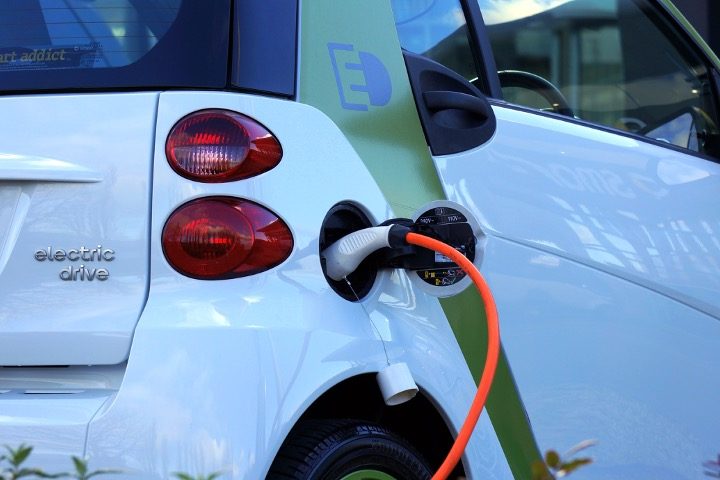
Call it the magical shrinking electric vehicle (EV) dream. In 2021, automakers expected EV sales to constitute 70 percent of the total automotive market by 2030. They’d lowered this estimate to 40 percent just a year later.
Now, the latest report from international accounting firm KPMG, issued last December, reveals that car dealers expect EV sales to be a mere 20 percent of the 2030 market. This certainly isn’t the trend the Biden administration (2030 EV goal: 50 percent) and other greentopians had hoped for. Nonetheless, says one economist, EV prospects are even worse than the above predictions indicate.
In fact, states Ron Ross, professor emeritus of economics, we face an “inevitable EV implosion.”
Ross calls the goal of transitioning from internal-combustion-engine (ICE) cars to EVs a greentopian “hallucination” and “the most ill-conceived government policy objective in modern history.” (This is questionable: The “flatten the curve” Covid fiasco, with its lockdowns and mask mandates, is a contender, too.)
The EV transition goal was always only just a tad more feasible than a sex transition, as it involves multiple disqualifying factors. “It’s like having a dozen fatal diseases all at the same time,” Ross writes.
“Any goal as massive as a total conversion from ICE vehicles to EVs requires careful planning and infrastructure preparation,” the economist continues. “It would necessitate a rapid doubling of electricity generation and grid expansion. In today’s world that’s impossible.” But this hasn’t stopped EVs’ boosters from selling empty promises, Ross opines. He then tells us:
There was no market research. Hmm — I wonder why. There were no feasibility studies. Hmm — I wonder why. Did they actually believe everyone would tolerate spending hours to charge their vehicles rather than the minutes they were accustomed to?
Car dealers are resisting further deliveries of EVs because of swelling inventories. Avis and Hertz can’t even get people to rent EVs! Yet, manufacturers are ramping up production just as consumers are balking. Something will have to give, and soon. EV makers and their shareholders will tire of pouring money down a rathole.
We are spending trillions of dollars on a fabricated dream, all for imaginary payoffs decades in the future.
Ross is hardly alone as an EV doomsayer. In July, the Manhattan Institute (MI) called “Electric Vehicles for Everyone” an “Impossible Dream” in a title. Among other things, the site writes that “no one knows how much, if at all, CO2 emissions will decline as EV use rises.” (If the gas’ decline would even be desirable is another question.) In fact, there are claims that because of the massive amounts of CO2 created during an electric car’s production, you’d have to drive the vehicle for hundreds of thousands of miles to just get to CO2-emission parity with an ICE auto.
This is just the tip of the iceberg, too. Sources as varied as former electric-car designer Ozzie Zehner and figures at the University of Edinburgh have presented studies indicating that EVs pollute more than ICE vehicles do; in fact, their production can involve toxic-waste release into the environment.
More points to consider:
- “No one knows when or whether EVs will reach economic parity with the cars that most people drive,” writes the MI.
- A geological study earlier this year concluded that there simply aren’t enough of the necessary metals and minerals in the Earth to make this “green” agenda a reality.
- Not only can our electric grid not handle the burden of powering hundreds of millions of EVs (there have already been rolling blackouts in California), but almost all our energy is derived from fossil fuels and nuclear sources.
- Pseudo-environmentalists are clear-cutting valuable forests to make room for green-energy endeavors such as wind farms. This is despite wind being a fatally unfeasible energy source. (It would require, for example, a region three times California’s size to meet the U.S.’s current energy needs with wind power, according to this analysis.)
Despite this, the pseudo-elites are determined to ban the sale of ICE vehicles, a product “that 99% of people use,” writes the MI. “A dozen U.S. states, from California to New York, have joined dozens of countries, from Ireland to Spain, with plans to ban the sale of new cars with an internal combustion engine (ICE), many prohibitions taking effect within a decade,” the site elaborates. “Meanwhile, the U.S. Environmental Protection Agency (EPA), in a feat of regulatory legerdemain, has proposed tailpipe emissions rules that would effectively force automakers to shift to producing mainly electric vehicles (EVs) by 2032.”
This is why the EV implosion Professor Ross predicts may not be the kind he envisions: It’s predicated on the idea the market will be allowed to hold sway. But as the USSR (with its bread lines) and countless other tyrannies have proven, central planners can and will trump the people once they’re sufficiently powerful. (And you don’t have to answer to the market if you can steal elections.)
Note, too, something about this possible future, where fewer people can afford vehicles and energy crunches and long EV charging times ensure far less driving:
It’s precisely what the pseudo-elites want.
Not only do they relish power and control over the people, but there are delusional greentopians who believe that for the planet to live, the American dream must die.
That is, for everyone but themselves.



